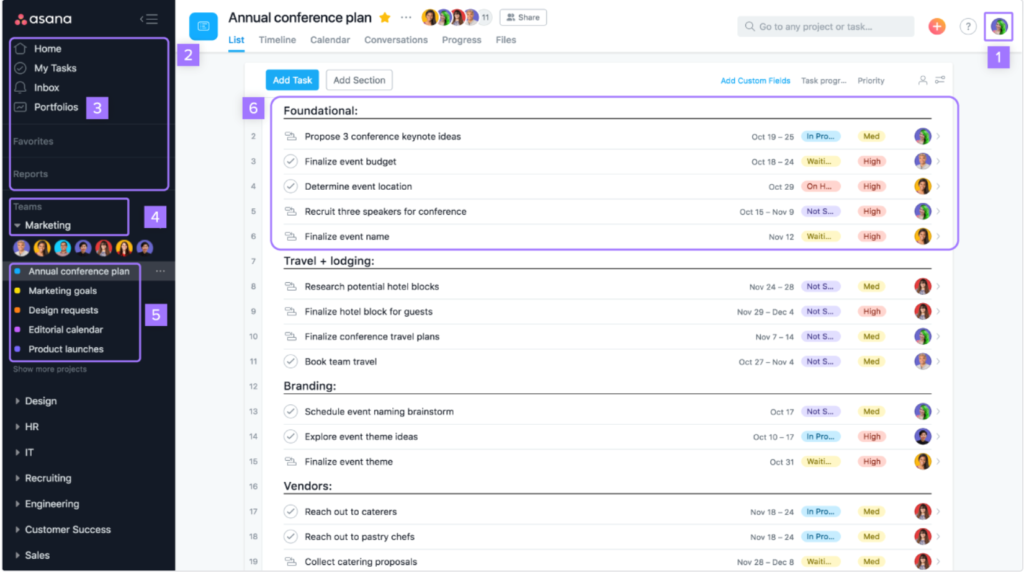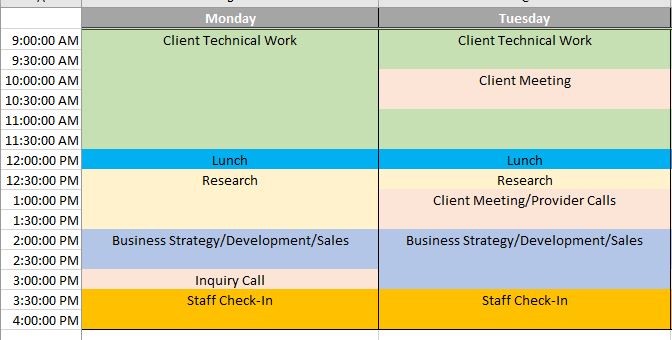Nobody likes admitting that they’re struggling.
Especially as a business leader, it’s hard to say, “I don’t have the answers.” So we often default to what seems like the quickest fix: hiring someone new or integrating the latest technology.
But when those “solutions” fall flat, you’re left wondering, What now?
This is where most organizational change strategies go wrong. Leaders jump into action, hiring, restructuring, or adopting new tools, before identifying the real issue. And without understanding the underlying cause, any strategy becomes a short-term patch instead of a lasting solution.
If this sounds familiar, you’re not alone. Many leaders are stuck in this same loop, patching problems [1] without understanding their root cause.
CLICK HERE [2] to listen to this article or scroll down to keep reading
The Real Problem Isn’t the Hire or the Tech—It’s the Focus
It’s not that you chose the wrong person or the wrong software. It’s that your attention is in the wrong place.
You’re zeroing in on the “how” before ever addressing the “why. [3]”
Trying to fix internal issues with external tools is like slapping a bandage on a deeper wound. You’re treating symptoms, not the source.
And that’s why so many change efforts fail.
According to McKinsey, nearly 70% [4] of organizational transformations don’t reach their goals. Why? Because they don’t start by aligning mindset and strategy.
Why Organizational Change Must Start With Mindset
Think of your business mindset as its central nervous system. It affects everything, your culture, your client experience, and every process in between.
If the mindset is off, problems start popping up everywhere. You might fix one issue only to have two more emerge. It feels like you’re constantly playing catch-up, always reacting, never advancing.
This is where organizational change strategies must begin: with the mindset.
Before diving into tactics, ask yourself:
- What are our actual goals?
- How much growth do we want, and what will it take to get there?
- Can we support that growth with our current systems and culture?
- If not, what needs to change internally?
Only when these questions are clearly answered can the “how” begin to take shape effectively.
My Virtual COO Related Article: The IDEOS Method to Transforming Your Mind and Business [5]
Five Organizational Change Strategies That Drive Sustainable Growth
While every business transformation looks different, these five strategies consistently help leaders maintain a healthy and productive pace during periods of change.
1. Collaboration: Change Begins with Your People
Collaboration [6] is more than a buzzword; it’s essential. Yet, it’s often perceived as a threat to individual autonomy.
By involving employees in decision-making and change planning, you can:
- Delegate more effectively
- Leverage team strengths
- Build ownership through initiative champions
- Create a workplace culture based on trust and retention
True collaboration speeds up adoption and keeps change efforts aligned and productive. Without it, even the best plans falter.
2. Essentialism: Make Strategic Trade-Offs [7]
Not every current practice will support your future goals. Embracing essentialism, the discipline of focusing only on what truly matters, helps eliminate distractions and unlock capacity.
This might mean letting go of:
- Inefficient practices
- Misaligned clients
- Longtime vendors
- Even employees who don’t support the future vision
As the Harvard Business School [8] points out, strategic trade-offs are necessary for progress. You can’t do everything. Choose what supports your long-term direction and be willing to release what doesn’t.
JCG Related Article: How to Offboard a Client [9]
3. Organize Your Team for Clarity and Execution
Change without structure can easily descend into chaos. Organizing your team around clear goals, roles, and timelines is vital.
Use tools like Asana [10], ClickUp [11], or Trello [12] to document and assign:
- What needs to happen
- Why it matters
- Who’s responsible
- When it’s due

These tools create transparency and accountability. They help your team see progress and understand their role in achieving it, key drivers for momentum and morale.
4. Value Your Time: Schedule with Purpose
Time is often underestimated in organizational planning. Many leaders give it away too freely, then wonder where it all went.
Start treating your time as an asset tied to your goals. Ask yourself: What is each hour of my day worth? What are my highest priorities?
Use time-blocking techniques to:
- Map your day around priorities
- Allocate specific time for meetings, development, and deep work
- Avoid context-switching and mental fatigue

This not only enhances productivity but also fosters a calmer, more confident mindset. With clear boundaries, you create space to lead intentionally.
5. Embrace Vulnerability: Lead with Openness
According to researcher Brené Brown [13], vulnerability is one of the most powerful tools in leadership. Yet many leaders avoid it out of fear–fear of being judged, of losing authority, of appearing weak.
But the truth is, pretending to have all the answers is exhausting and counterproductive.
When leaders openly share what they need, expect, or are struggling with, it invites support and trust. It creates space for collaboration and realistic expectations. And it builds a more connected, motivated team.
Whether it’s asking for help or being honest about capacity, vulnerability often unlocks your biggest growth opportunities.
Final Thoughts: Sustainable Change Starts with the Right Focus
A struggling business needs more than quick fixes—it needs clarity and alignment.
True transformation isn’t about adding more tools or people. It’s about rethinking how you approach change altogether. It begins with a mindset. It continues through collaboration, focus, structure, time management, and authenticity.
These organizational change strategies don’t just help you survive transition—they equip you to thrive through it.
So, if your business is facing stagnation, ask yourself: Are you fixing problems at the surface, or are you transforming from the inside out?
Because lasting change always starts from within.
Frequently Asked Questions (FAQs)
What are organizational change strategies?
Organizational change strategies are structured approaches used to guide businesses through transitions such as growth, restructuring, digital transformation, or cultural shifts. These strategies ensure that changes are executed thoughtfully, aligned with business goals, and sustainable over time.
Why is mindset important in change management?
Mindset is the foundation of any successful change. A positive, growth-oriented mindset fosters openness, resilience, and a willingness to adapt. Without it, even well-planned strategies may fail due to resistance, misalignment, or poor execution.
How can leaders foster collaboration during change?
Leaders can promote collaboration by involving employees early in the planning process, encouraging feedback, delegating responsibilities, and recognizing contributions. Transparency and trust are key to successful engagement.
How do I know if my change strategy is working?
Measure both qualitative and quantitative outcomes. Look at KPIs such as employee engagement, productivity, client satisfaction, and financial performance. Also, assess feedback loops and cultural shifts, are teams aligned, motivated, and clear on goals?
Sincerely,
PS. Want to talk more about how I help businesses make progress and operate better? Click HERE [15]. Want to receive my monthly solutions email? Click HERE [16].
